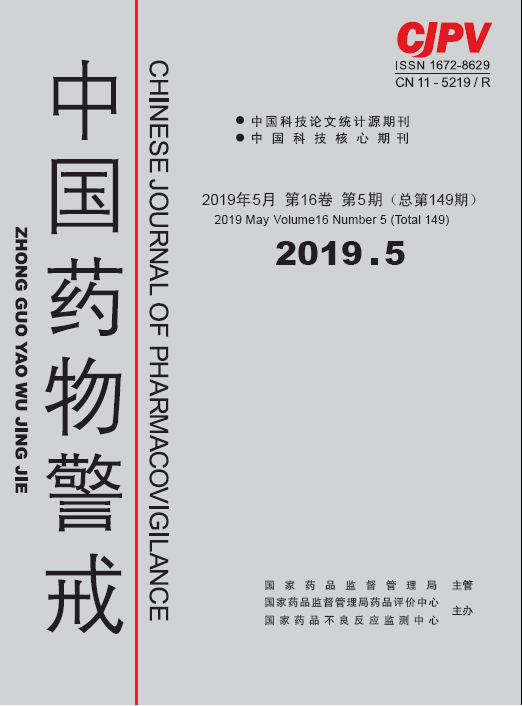|
|
Analysis of the Clinical Characteristics and Prognosis of 371 Cases of Drug-Induced Liver Injury in Our Hospital
YANG Wen, WANG Qi
2019, 16(5):
293-296.
Objective To investigate the clinical characteristics and the influence factors of prognosis of drug-induced liver injury. Methods To retrospectively analyze 371 patients' sex, age, underlying disease, drinking history, liver injury drugs, and laboratory inspection with drug-induced liver injury in our hospital in the past 4 years.Results From 2015 to 2018, the annual composition of patients with DILI in hospitalized patients with liver disease was gradually increasing in our hospital. The ratio of male to female was 1:1.25, and the age mainly concentrated on 40~69 years old (59.57%). Common medicines causing drug-induced liver injury were traditional Chinese medicines(33.25%), anti-tumor drugs (17.63%), and anti-microbial drugs (14.61%), of which single-agent cyclophosphamide (5.54%) was the most. 74.39% of patients had clinical symptoms, mainly including fatigue (56.33%), loss of appetite (55.53%), and jaundice(36.93%).The clinical type is mainly hepatocyte injury type(69.54%). Those patients with ALT, AST increased were prone to hepatocyte injury (P =0.000), the older and those with high ALP were prone to cholestasis (P =0.01, P =0.000), and those with a history of tumors and high albumin were prone to mixed type(P =0.01, P =0.000). 85.98% of patients with DILI had a good prognosis, but 14.01% had a poor prognosis. The risk factors of prognosis were age (OR=4.12, P =0.00), basic liver disease (OR=2.54, P =0.02), total bilirubin (OR=1.01, P =0.00) and cholestasis type (OR=4.04, P =0.01) so that the degree of risk was age> cholestasis>basic liver disease>total bilirubin. Albumin was the protective factor of prognosis(OR=0.21, P =0.00). Conclusion A number of drugs could cause drug-induced liver injury. The morbidity was gradually ascending. The clinical symptoms were not specific and clinical type was mainly hepatocyte injury type. Most patients had a good prognosis, but a minority of patients had a poor prognosis. Patients who are older, with basic liver disease, high TBIL, and clinical type of cholestasis had an increased risk of poor prognosis, while higher albumin was good for patients.
References |
Related Articles |
Metrics
|
